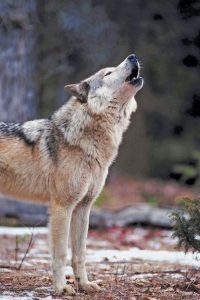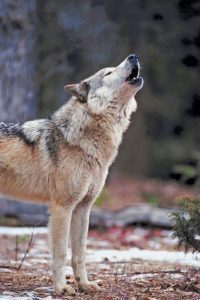
Rancher pressure is 1 Reason We are looking seriously at Northern Ca for our Sanctuary Location. Today We have received another email and phone call from a Land Owner in Northern California that has expressed the approval of Financing our Purchase. She has scheduled a meeting with us after the Holidays to work out some fine Details. We have 4 other parcels to choose from, however with access and water issues… some are better than others. Todays parcel is at the top of the list if we can work out acceptable terms.
Northern Ca: With nine confirmed wolves now in California and the California Department of Fish and Wildlife (CDFW) releasing its final wolf plan for the state, some cattle ranchers are worried that a wolf population influx within the next few years could trigger massive loss of their livestock.
For Lauren Sizemore, the executive director for The Buckeye, an organization that represents family farms, ranches, forest landowners and resource managers in the North Coast, it’s only a matter of time before wolves impact cattle.
“It’s a big concern for livestock and people and producers out in areas like Petrolia and Kneeland,” Sizemore said. “Some of our ranchers have 500 to 1,000 acres to look over and to lock all of their cattle in a small pin, which is one suggestion by the CDFW, is an unfeasible option for us.”
Sizemore, a sixth generation family ranch owner in Kneeland, is concerned for her family’s livelihood, which she said could be compromised if their cattle suffers losses from wolf attacks.
“It’s not just about the cattle dying, which is a very slow and painful death for them, but it’s also an economic problem,” Sizemore said. “If the cattle are exposed to the stressors of wolves they might not eat as much and will be less healthy than normal cattle.
“They won’t gain adequate weight which is bad for our business, too,” Sizemore continued. “Wolves also hunt in packs, so it’s not like we’re facing a single mountain lion or coyotes.”
Sizemore said producers in Humboldt County and the North Coast must be really proactive in educating themselves on wolf management strategies, which include some non-lethal methods within the CDFW’s final wolf plan and methods that are currently practiced in Oregon and Idaho.
“We’re protected for a little while longer and we know that a lot of wolves are deterred by large highways and large roadways, too. As producers, we have a really thin balance between economic and ecological issues. That balance is key to our own sustainability,” Sizemore said. “We need to be cautious and think the worst, but ultimately hope for the best. Protecting our livestock is important, but we also need to learn to coexist.”
Implementing that coexistence might come as a huge challenge, according to UC Cooperation Extension livestock and natural resources adviser Jeff Stackhouse.
“There’s definitely uncertainty around it at this point,” Stackhouse said. “On one hand, places like Canada, Idaho and Montana are still ranching with wolves in place. It is what it is.
“On the other hand, these people make a living by caring for their animals,” he continued. “It’s what they do and seeing livestock decimated by wolves is a problem. I understand the fear they have.”
Stackhouse said that although the CDFW provided guidelines for nonlethal methods of dealing with wolves, that several of them might not work. He said having someone able to watch and monitor cattle could potentially cost more than some ranchers could afford.
“The CDFW might be a little ill-informed because these nonlethal strategies will not always work,” Stackhouse said. He said having guard dogs watch the cattle could produce problems especially if cattle are stressed by wolf attacks.
“These plans are not well thought out. For one, if a wolf can kill an elk or a moose then they can kill a dog. Even two dogs wouldn’t be enough to take on a whole pack of wolves. Also a lot of ranchers herd cattle with dogs and when wolves come into the scene that presents problems. If cows start fighting off wolves to protect their calves, they’re less likely to feel safe with dogs and start fighting them too,” Stackhouse said.
Stackhouse said the agency doesn’t have practical solutions for complex problems and livestock producers are frustrated with the lack of information.
CDFW’s Wildlife Program Manager for the Northern Region Karen Kovacs previously told the Times-Standard the nonlethal guidelines for dealing with wolves include habitat modification, which means making properties less attractive to wolves by removing diseased of dying animals from open areas, disposing of carcasses and bone piles so that they are inaccessible to wolves and other scavengers, and fencing livestock at night using permanent or portable fences.
“We want these methods to also be non-injurious so we encourage people to have air horns or loud noises to keep wolves away. Shooting into the air instead of at the wolves is also better,” Kovacs said. “People can also physically chase the wolves out on ATVs or horses for short distances to get them off their properties. We included a list of precautions which are outlined on the CDFW’s website.”
